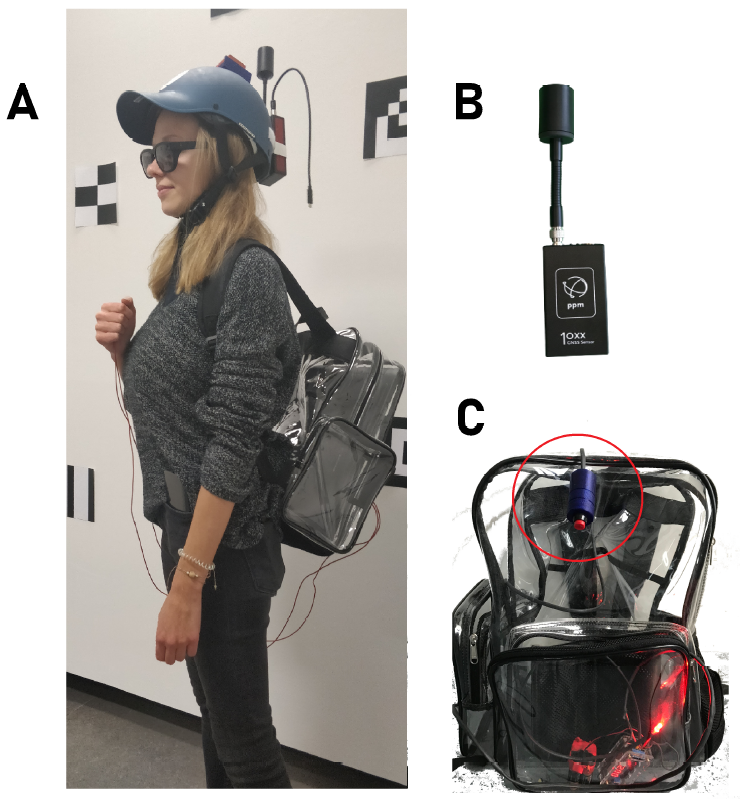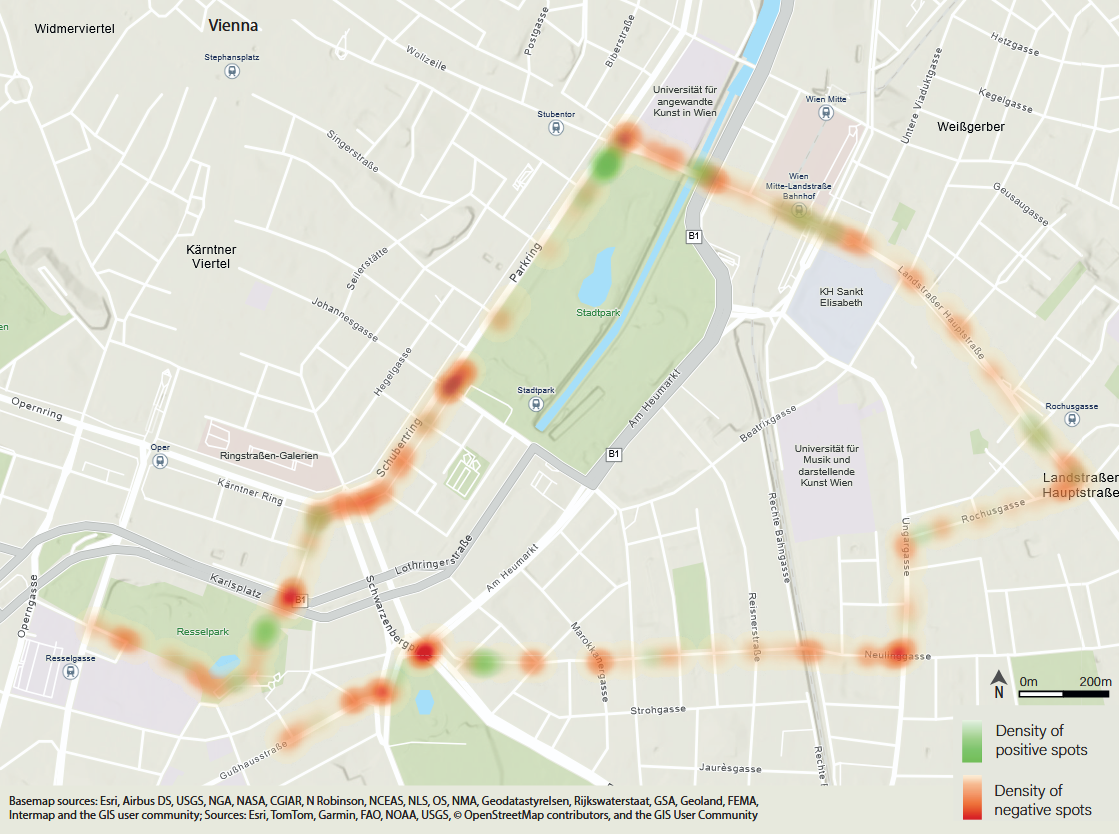Wayfinding & Beyond: Spatial Cognition & Behavior
Collecting the hidden messages of the human body...
We study the behavioral correlates of humans finding their way as pedestrians. In doing so, our lab has a strong history in larger scale human subject experiments involving between 30 and 100 participants per study. To name but a few examples: We are interested in predicting human-computer interactions (e.g., requesting a route instruction) which are triggered by spatial cognition. We study if and based on which signals we can detect derive spatial decisions from human behavior prior to actions being taken (e.g., predicting a turn). We use behavioral correlates to understand states and processes of spatial cognition, e.g. to predict spatial familiarity or cognitive processes of wayfinding.
...to decypher spatial cognition!
We employ a range of analysis methods to this end, ranging from classical inductive statistics, over classification based on machine learning methods, to unsupervised deep learning.
We deploy a range of sensors in the field: We use mobile eye trackers (PupilLabs Invisible, PupilLabs Core) to monitor participants’ gaze behavior. We use high precision IMUs (Xsens MTi-300) and full body motion capture (Movella Xsens Awinda) to observe participant behavior. We track user locations by utilizing a high precision GNSS receiver (PPM 10XX-38). We regularly collaborate with our colleagues from the XMo lab to investigate human behavior in wayfinding and mobility.
Selected Publications
Predicting spatial familiarity by exploiting head and eye movements during pedestrian navigation in the real world
Kattenbeck, M., Giannopoulos, I., Alinaghi, N., Golab, A., & Montello, D. R. (2025)
Scientific Reports, 15(1), 7970
Decoding wayfinding: analyzing wayfinding processes in the outdoor environment
Alinaghi, N., Giannopoulos, I., Kattenbeck, M., & Raubal, M. (2025)
International Journal of Geographical Information Science, 39(8), 1770–1800
Free Choice Navigation in the Real World: Giving Back Freedom to Wayfinders
Mazurkiewicz, B., Kattenbeck, M., & Giannopoulos, I. (2023)
ISPRS International Journal of Geo-Information, 12(2), 27
It’s also about timing! When do pedestrians want to receive navigation instructions
Golab, A., Kattenbeck, M., Sarlas, G., & Giannopoulos, I. (2022)
Spatial Cognition & Computation, 22(1–2), 74–106
Will you take this turn? Gaze-based turning activity recognition during navigation
Alinaghi, N., Kattenbeck, M., Golab, A., & Giannopoulos, I. (2021)
Leibniz International Proceedings in Informatics, LIPIcs, 208, VII
Are you a student? Take a look at what you can achieve with us
Current students (in alphabetical order)
Arnold Käffer B.Sc. works on the prediction of different levels of familiarity based on the gait of pedestrian wayfinders. The in-situ dataset was collected on UCSB campus by Dr. Kattenbeck during his 18 months visit (N=96) a part of his MSCA Global Fellowship (H2020).

Franziska Öhlinger B.Sc. applies machine learning methods to predict emotional changes in bicycle riders in Vienna based on motion capture and eye tracking data for her master thesis. She specifically analyses the prediction of emotion valence from within different time windows employing motion capture, gaze, and environmental features. Her work builds upon the master thesis of Sarah Prinz M.Sc. (see below).

Franziska Seeber does our Bachelor thesis with us working on a novel POI-based navigation system. This system allows to pre-define routes along different cultural heritage sites in urban environments based on open-source technology.

Former students (in alphabetical order)

Antonia Golab M.Sc. conducted an in-situ study with pedestrians (N=50) who were required to walk a route in familiar and another route in unfamiliar environments for her master thesis. The participants were tracked using a mobile eye tracker, a head-mounted IMU, and a high precision GNSS receiver. Her dataset was later used by our alum Dr. Negar Alignahi during her PhD work.

Sarah Prinz M.Sc. conducted an in-situ study tracking gaze and upper body movements of bicycle riders in Vienna for her master thesis (N=28). Her main research interest was in differences in fixation durations and head movements between spots which were perceived positively as compared to those which were seen negatively.
Selected Research Projects
FamConMe (2022-2024)
“Familiarity is Key! Conceptualizing and Behaviourally Measuring Familiarity In-Situ” : In this Marie Skłodowska-Curie Grant, Dr. Kattenbeck has focused on understanding spatial familiarity and measuring it as a multi-dimensional construct based on self-report, knowledge, and behavioral correlates of the human eye and body.

